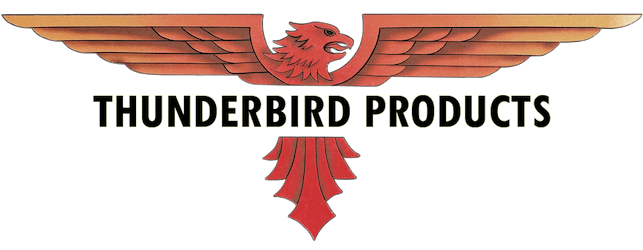Thunderbird Products offers superior-quality, durable edge metal products for almost any edge metal application. Our edge metal solutions are custom fabricated to many dimensions and angles, are are all proudly made here in the USA.



Fast fabrication of all profiles including: drip edge, tile pan, roof to wall, L metal, valley metal, z bar, coping & more.
Edge metal can be fabricated with:
- Copper
- TPO (white, tan)
- PVC (white, tan)
- Stainless steel
- Galvanized
- Bonderized
- Kynar
- 24 or 26 gauge
Any combination will ship in 3-5 days
Max shipping charge of $1,000 per crate. Each crate can accommodate up to 4,000 feet.
Edge metal products can be customized to meet many project needs.

Thunderbird Products proudly delivers edge metal systems for a range of builders, contractors, roofers and the savvy DIY homeowner.
A durable, precise roof edge solution is crucial for any construction or building structure. Used properly, roof edge protects your roof from water damage. Our time-tested design keeps the water moving away from your roof and fascia. Copper, steel and TPO/PVC components ensure durability.
Inquiries on pricing and quantities should be addressed to sales@tbirdusa.com.
If you have questions, or want to learn more about Thunderbird Products edge metal capabilities, fill out the form below.
Edge metal FAQs
What is edge metal?
Roof edge metal, commonly referred to as edge flashing or drip edge, is a crucial component in roofing systems designed to manage water runoff and protect the underlying structure.
Typically made of durable materials such as galvanized steel, aluminum, or stainless steel, roof edge metal is installed along the perimeter of a roof, where the roof deck meets the outer edges. Its primary functions include directing rainwater away from the fascia and preventing it from seeping into the structure, thereby safeguarding against potential water damage. Additionally, roof edge metal helps enhance the aesthetics of the roofline and provides structural support to the roofing materials, contributing to the overall integrity and longevity of the roofing system.
What is the best material for edge metal?
The choice of the best material for drip edge largely depends on factors such as climate, budget, and aesthetic preferences. Common materials used for drip edge include galvanized steel, aluminum, and stainless steel.
Galvanized steel is known for its durability and cost-effectiveness, making it a popular choice in various climates. Aluminum, on the other hand, is lightweight, corrosion-resistant, and suitable for areas with high humidity or salt exposure. Stainless steel is exceptionally durable and resistant to corrosion, making it an ideal option for harsh weather conditions. Ultimately, selecting the best material for drip edge involves considering the specific requirements of the location and balancing factors like longevity, weather resistance, and budget constraints.
What are the two common types of drip edge?
There are typically two main types of drip edge used in roofing applications: L-shaped and T-shaped drip edges. The L-shaped drip edge, also known as "L-style" or "L-flashing," features a vertical flange that extends downwards over the edge of the roof and a horizontal flange that lies flat against the roof deck. This design helps direct water away from the fascia and prevents it from seeping under the roofing material.
The T-shaped drip edge, often referred to as "T-style" or "T-drip edge," has an additional horizontal extension that lies flat on top of the roof deck. This extension provides extra protection against water intrusion, particularly in regions where wind-driven rain is a concern. Both types of drip edge are crucial for maintaining the integrity of a roofing system by managing water runoff and protecting the underlying structure. The choice between L-shaped and T-shaped drip edge depends on factors such as climate, roofing material, and specific installation requirements.
Should you paint edge metal?
Painting drip edge is generally not necessary, as many drip edge materials come pre-finished with coatings that provide corrosion resistance and durability. Galvanized steel, aluminum, and stainless steel, common materials for drip edge, often have protective coatings or finishes that enhance their resistance to weathering, rust, and corrosion.
However, if aesthetics or matching the roof edge color to the roofing material is a concern, some people choose to paint it. If you decide to paint the drip edge, it's crucial to use a high-quality exterior paint suitable for the specific material. Ensure that the paint is compatible with metal and can withstand the elements to maintain the long-term integrity and appearance of the drip edge. Additionally, follow proper surface preparation and application techniques for the best results. Keep in mind that not all situations require painted drip edge, and in many cases, the material's inherent protective finish is sufficient for effective performance over time.
How do you install a metal roof drip edge?
To install a metal roof drip edge, start by positioning it along the eaves, securing it with nails or screws while ensuring a slight overhang. Overlap sections by at least an inch and miter corners for gable ends. Extend the drip edge beyond the roof deck on gables, and install roofing underlayment over it for added protection. Always follow manufacturer guidelines and adhere to local building codes for a proper and effective installation.

